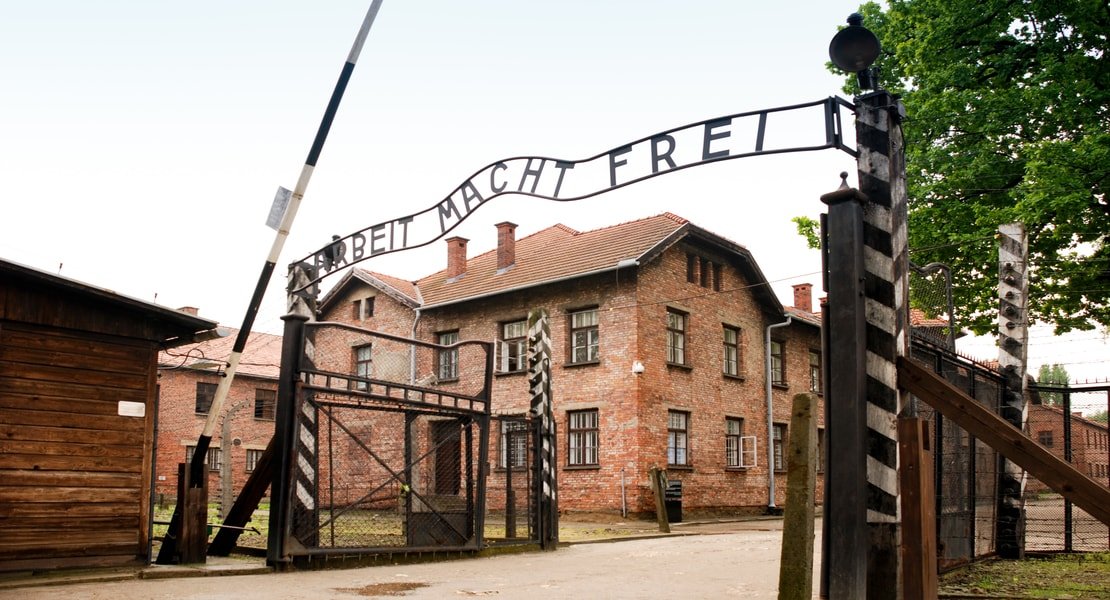If you are in Krakow and you want to visit Auschwitz join one of our tours! You will learn more about its history there.
Germans made Auschwitz in 1940. They chose Oswiecim as the location of the camp. Nazi connected that Polish city to the Third Reich.
It was the largest extermination camp in Europe. Nowadays, people worldwide know Auschwitz as a symbol of terror and also the Holocaust.
Learn More: Where is Auschwitz?
Auschwitz Camps
Auschwitz was a complex of over 40 extermination as well as concentration camps. Nazi operated them during World War II and the Holocaust in occupied Poland.
Auschwitz consisted of Auschwitz I – the main camp, Auschwitz II-Birkenau – a concentration as well as an extermination camp, Auschwitz III-Monowitz – a labor camp, and also many subcamps.
Read More: Visit the Largest Extermination Camp of Europe – Auschwitz
History of Auschwitz

In 1939, Germany started World War II by invading Poland. They changed Auschwitz I from army barracks to war prisoners camp for Polish political prisoners.
In May 1940, Germans brought the first inmates to the camp. In August 1941, they started first gassings in block 11 of Auschwitz I. Next month, Germans started building Auschwitz II. From 1942 to 1944, they delivered Jews from all over German-occupied Europe there.
They sent 1.3 million people to Auschwitz and 1.1 million of them died there. 960,000 deceased prisoners were Jews. In addition, 865,000 of them were gassed on the arrival. The rest of the deceased prisoners were 74,000 non-Jewish Poles, 21,000 Roma, 15,000 Soviet as well as 15,000 other Europeans.
Recommended Tour : Skip-the-Line Auschwitz-Birkenau Camp Tour with Transport
Those who weren’t gassed died of exhaustion, starvation, disease, individual executions, or beatings. Some of them were killed during medical experiments.
At least 802 prisoners tried to escape from the camp. 144 made it successfully. However, on 7 October 1944 two units that consisted of prisoners who staffed the gas chambers also tried to escape. Sadly, they failed. About 15% of the staff (789 people) ever stood trial, the rest were executed.
In January 1945, the Soviet Red Army approached Auschwitz. Then, the SS sent most of the prisoners to the camps inside Germany and also Austria.
On 27 January 1945, Soviet troops entered the camp. Since 2005 this is the International Holocaust Remembrance Day.
Decades after the war some camp survivors wrote memoirs of their experiences. In 1947 Poland made the Auschwitz-Birkenau State Museum. In 1979 UNESCO named it a World Heritage Site.
Recommended Tour
Join our Auschwitz-Birkenau and Krakow Old Town guided tour! In the beginning, your guide will show you the historic highlights of the Krakow city center. You will see beautiful Old Town as well as stunning architecture.
Later, you will get into a vehicle and travel to Auschwitz. You will be able to step back in time. Your guide will teach you about one of the darkest chapters in the history of Europe. Your guide will show you the main sights as well as buildings.
At this time, you will return to Krakow. Your driver will drop you off in the city center.
This is 9 hours tour and it starts at 6:20 am. Pick the best day for you and join us


